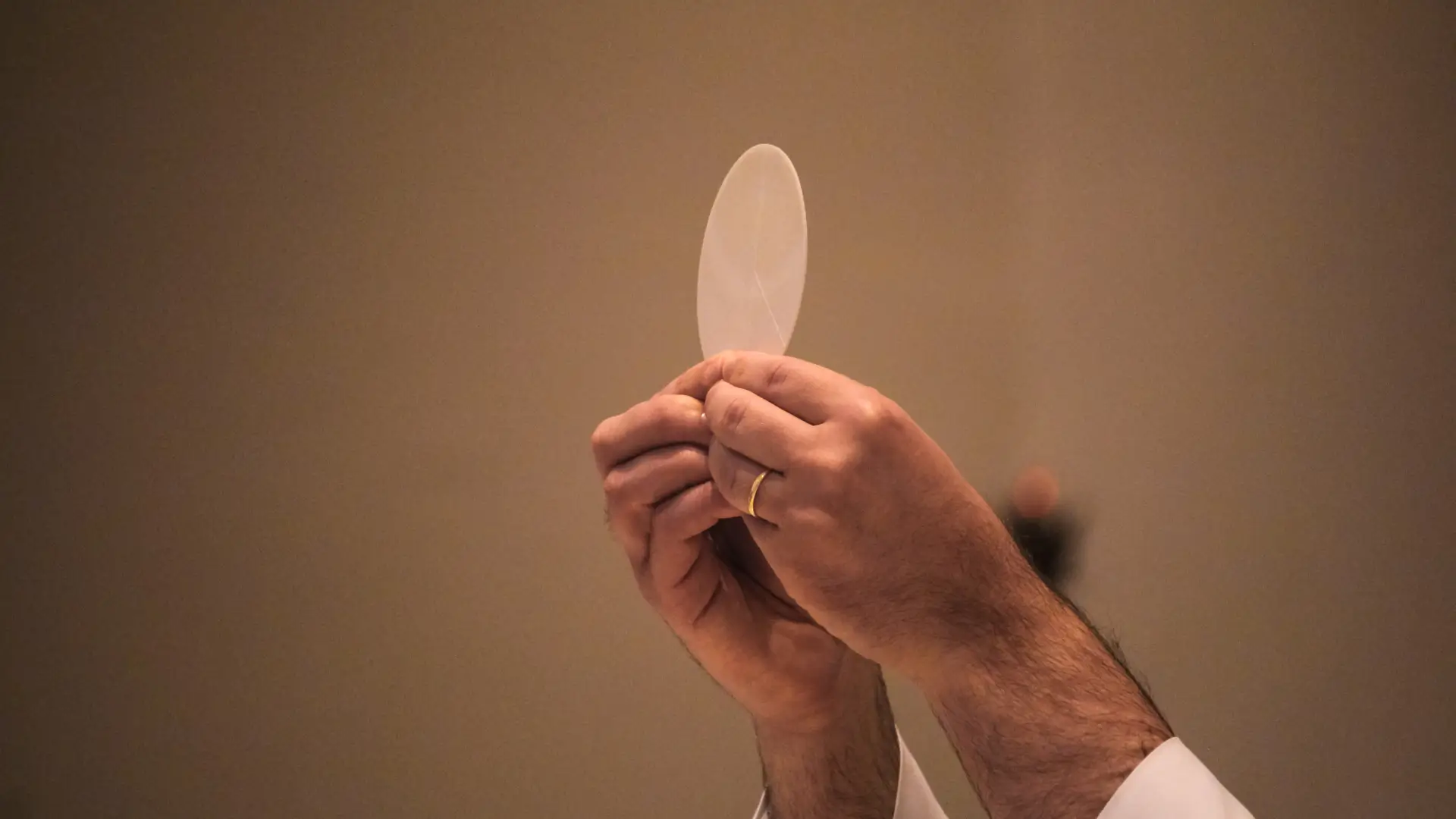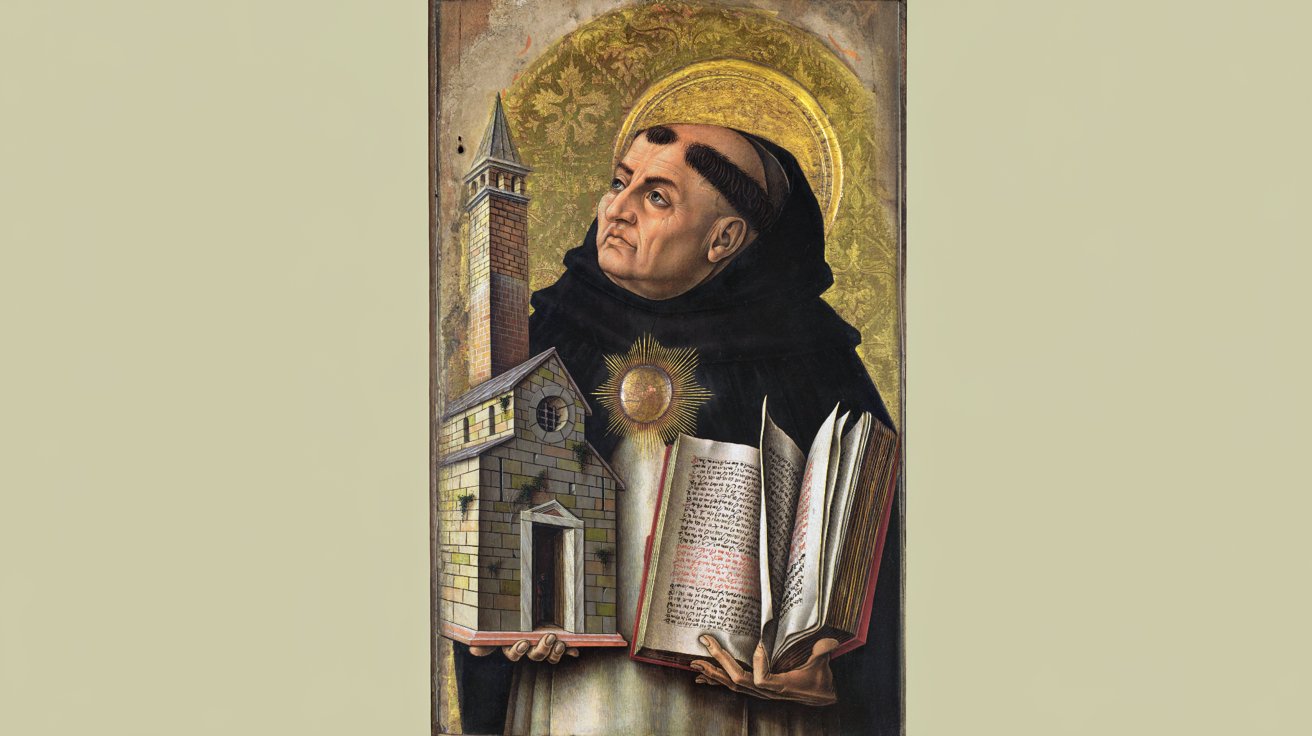As Catholics, the Sacrament of the Eucharist holds a central place in our faith, serving as the source and summit of our Christian life. The First Communion is a profound milestone in a young Catholic’s spiritual journey, marking the first time they receive the Body and Blood of Jesus Christ. This sacred event deepens their relationship with Christ and integrates them more fully into the Church community.
Understanding the First Communion
First Communion is the reception of the Eucharist for the first time by an individual, typically a child who has reached the age of reason—around seven or eight years old. It is the third Sacrament of Initiation, following Baptism and Confirmation. Through this sacrament, communicants participate in the Paschal Mystery of Christ, uniting themselves with His sacrifice and resurrection.
The Eucharist: The Heart of Our Faith
The term “Eucharist” means “thanksgiving,” reflecting our gratitude for Jesus’ sacrifice and His continued presence with us. The Eucharist is not merely symbolic; it is the real presence of Christ—His Body and Blood—under the appearances of bread and wine. This mystery of faith is a cornerstone of Catholic belief and practice.
Biblical Foundations
The institution of the Eucharist is rooted in the Last Supper, where Jesus shared bread and wine with His disciples and instructed them to “do this in memory of me.” This command established the Eucharist as a perpetual celebration within the Church. The Bread of Life discourse in the Gospel of John further emphasizes the significance of Jesus as the spiritual nourishment for believers.
The Rite of Holy Communion: Steps and Elements
Understanding the structure and symbols of the Holy Communion ceremony enhances our appreciation of its sacredness. The Rite of Holy Communion typically unfolds through several key steps, each rich with meaning and tradition.
1. Preparation and Gathering
The ceremony begins with the assembly of the faithful, often preceded by a period of prayer and reflection. The celebrant, usually a priest, leads the congregation in songs and readings that set the tone for the sacrament.
2. The Presentation of the Gifts
During this part of the Mass, bread and wine are brought to the altar. The bread, often in the form of small, round wafers known as Hosts, symbolizes the Body of Christ. The Host’s circular shape represents eternity and the unending love of God. The wine, placed in a chalice, signifies the Blood of Christ, shed for our salvation.
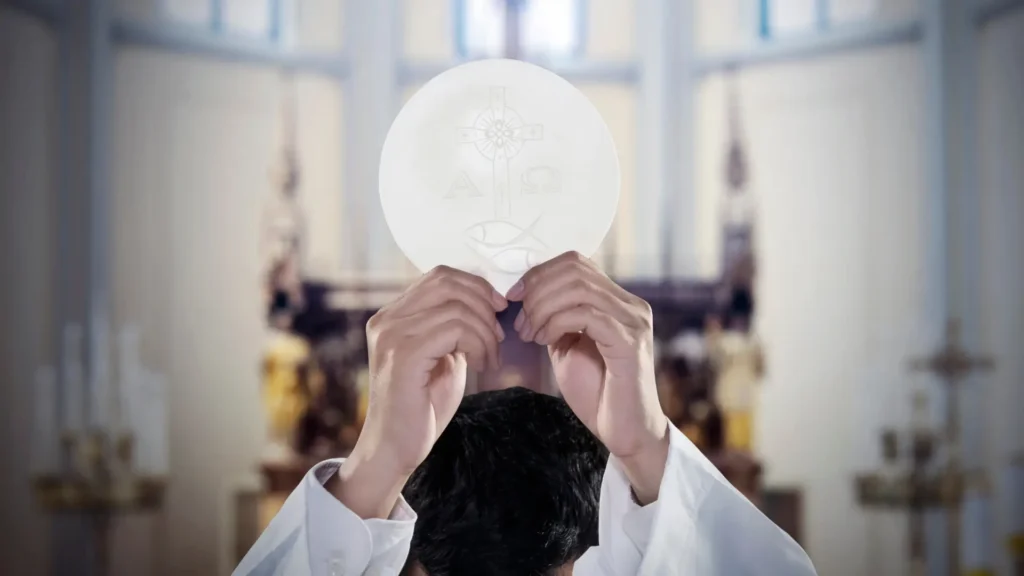
3. The Eucharistic Prayer
This central prayer of the Mass includes the Consecration, where the priest invokes the Holy Spirit to transform the bread and wine into the Body and Blood of Christ. This belief in transubstantiation affirms that Jesus is truly present in the Eucharist.4. The Lord’s Prayer and Sign of Peace
After the consecration, the congregation prays the Lord’s Prayer together, followed by the exchange of the Sign of Peace. This gesture fosters unity and reconciliation among the faithful, reflecting the communal nature of the Eucharist.
5. Breaking of the Bread
The celebrant breaks the consecrated Host, symbolizing the breaking of Christ’s body for humanity. This act signifies our shared participation in His sacrifice.
6. Reception of Communion
Communicants approach the altar to receive the Eucharist. They typically receive the Host on the tongue or in the hand, while the chalice containing wine may be offered depending on parish customs and individual preparation. Receiving both the Body and Blood of Christ is encouraged for full communion, though many receive only the Host.
7. Thanksgiving and Dismissal
After Communion, the congregation offers prayers of thanksgiving. The Mass concludes with a final blessing and dismissal, sending the faithful to live out the Eucharistic call in their daily lives.
The Symbols of Holy Communion
The Host
The Host, a small, round wafer, represents the Body of Christ. Its simplicity underscores the humility of Jesus, who came to serve and sacrifice for us. The circular shape signifies God’s eternal nature and the infinite love He has for humanity.
The Chalice and Wine
The chalice holds the wine, symbolizing the Blood of Christ. Sharing wine during Communion highlights the new covenant between God and humanity, sealed by Jesus’ sacrifice. The act of drinking wine is a reminder of the life-giving blood Jesus shed for our redemption.
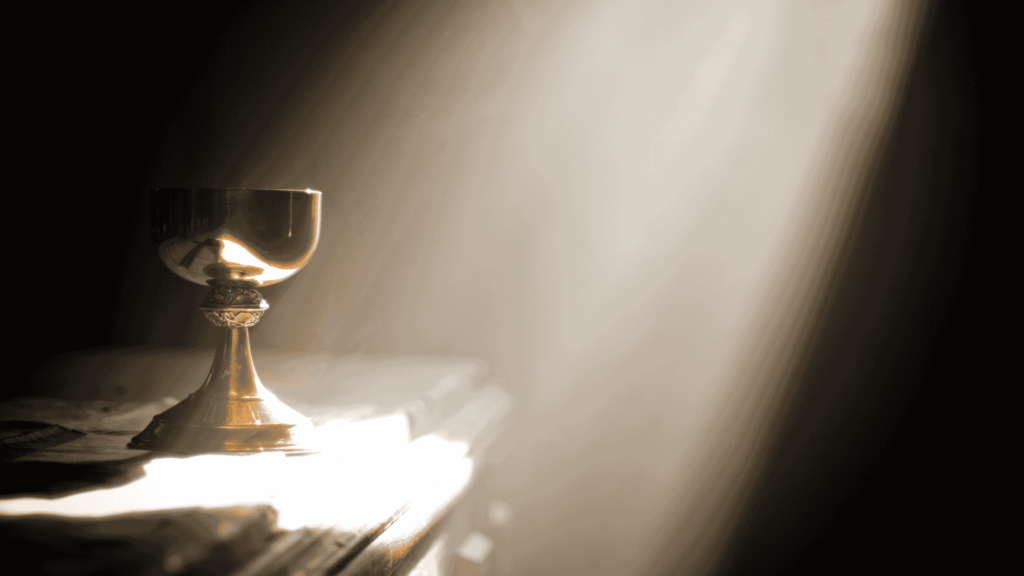
The Agnus Dei
Often displayed as a small circle or image of a lamb, the Agnus Dei (Lamb of God) symbolizes Jesus’ role as the sacrificial lamb who takes away the sins of the world. This symbol reinforces the themes of sacrifice and redemption inherent in the Eucharist.
The Altar
The altar is the sacred table where the Eucharistic celebration takes place. It represents Christ Himself, the cornerstone of our faith, and serves as a focal point for worship and community gathering.
The Importance of First Communion
First Communion is more than a rite of passage; it is a sacred encounter that imparts grace and strengthens faith. Receiving the Eucharist allows the communicant to partake fully in the sacramental life of the Church. It nourishes the soul, fosters a deeper union with Christ, and empowers the individual to live out the Gospel in daily life.
Preparation and Age of Communicants
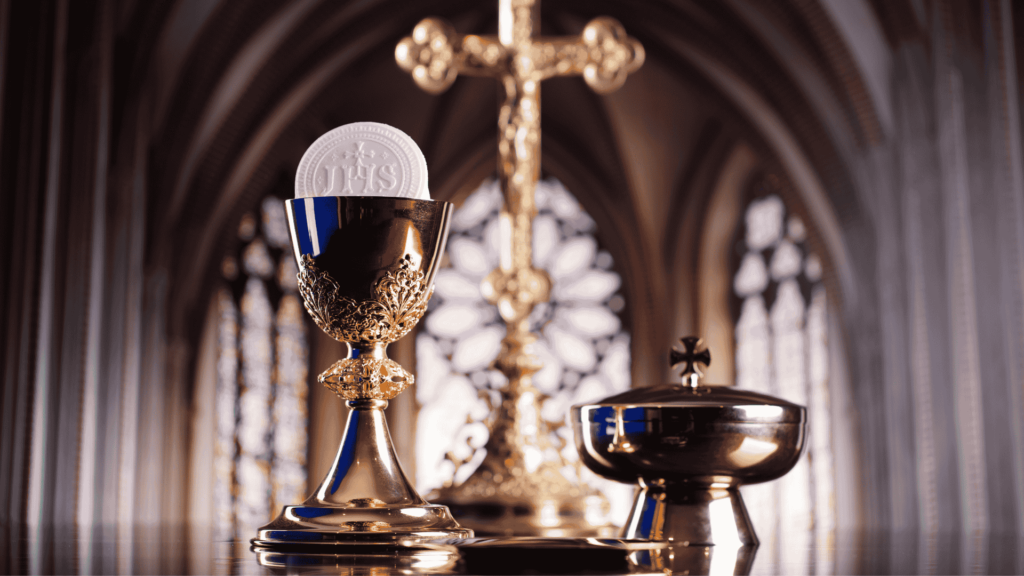
Children typically receive their First Communion after adequate preparation, which includes catechesis on the fundamentals of the faith, understanding the Eucharist, and the importance of Reconciliation. The Church considers the age of reason—generally around seven years old—as appropriate because the child can comprehend the significance of the sacrament and approach it with reverence.
Teachings of the Catholic Church
The Catholic Church teaches that the Eucharist is a sacrament of love, a sign of unity, and a bond of charity. It is the memorial of Christ’s sacrifice and a participation in His resurrection. By receiving the Eucharist, we are united with Christ and the entire Church, both in heaven and on earth.
Reflections from Church Leaders
Church leaders have long emphasized the transformative power of the Eucharist. Pope Francis describes the Eucharist as “a powerful medicine and nourishment for the weak,” highlighting its role in strengthening our spiritual lives. Bishop Robert Barron notes that “the Eucharist is the supreme moment when Christ’s love becomes real, tangible, and sacramental for us,” encouraging us to approach it with humility and openness.
The Community Dimension
First Communion is a celebration not only for the individual but also for the entire parish community. It reaffirms our collective commitment to foster faith in the younger generation and strengthens the bonds within the Church. It is a joyous occasion that brings families and communities together in faith and love.
Attendees and What to Bring
Who Attends a Catholic First Communion
A First Communion ceremony is a significant family and community event. Typically, the attendees include:
- Family Members: Parents, godparents, siblings, grandparents, aunts, uncles, and other close relatives play a crucial role in supporting the communicant.
- Parish Community: Fellow parishioners, including friends and members of the local Catholic community, join in the celebration, reinforcing the communal nature of the sacrament.
- Church Leaders: Priests, deacons, and sometimes bishops or other church officials may attend, especially in larger parishes.
- Guests: Friends and extended family members who wish to celebrate this important milestone with the communicant are also welcome.
What to Bring to a First Communion as a Guest
Attending a First Communion involves both spiritual and practical preparations. Here are some items to consider bringing:
- Appropriate Attire:
- For Children: Traditionally, girls wear white dresses symbolizing purity, often accompanied by a veil or a flower crown. Boys typically wear suits or dress shirts with ties.
- For Adults: Guests should dress modestly and respectfully, often in formal or semi-formal attire.
- Gifts: It is customary to bring a gift for the communicant. Common gifts include religious items such as rosaries, prayer books, Bibles, or personalized items like jewelry featuring religious symbols.
- Flowers: Floral arrangements are a beautiful way to honor the occasion. Bouquets for the communicant and centerpieces for the celebration venue are popular choices.
- Photos: Bringing family photos or offering to take pictures during the ceremony can help capture cherished memories of this special day.
- Cards: A heartfelt card with a personal message of congratulations and blessings adds a meaningful touch to the celebration.
What to Expect from a First Communion as a Guest
Attending a First Communion involves participating in a solemn and joyful liturgical celebration. Here’s what you can expect:
- Mass Structure: The ceremony follows the structure of a typical Catholic Mass, including readings from Scripture, prayers, hymns, and the reception of the Eucharist.
- Participation: Guests are encouraged to actively participate by singing hymns, responding during prayers, and observing moments of silence and reflection.
- Reverence: Maintaining a respectful demeanor throughout the ceremony is essential. This includes dressing appropriately, arriving on time, and refraining from unnecessary talking or distractions.
- Celebration Afterwards: Often, families host a reception or party following the ceremony. This gathering provides an opportunity to celebrate the communicant’s achievement, share food and fellowship, and create lasting memories.
- Spiritual Significance: Beyond the festivities, First Communion is a deeply spiritual event. Guests witness the communicant’s growing faith and their commitment to living as disciples of Christ.
Embracing the Sacrament Fully
As we participate in the Eucharist, we are called to reflect on its meaning and allow it to transform our lives. Communion with Christ invites us to live authentically and compassionately, embodying the teachings of the Gospel in our interactions with others.
Conclusion
The First Communion is a pivotal moment in our faith journey, inviting us into a deeper relationship with Jesus Christ and His Church. It is a time of joy, reflection, and spiritual growth. Let us support our young communicants with our prayers and example, remembering our own commitment to live as faithful disciples.
May we always cherish the gift of the Eucharist, approaching it with reverence and gratitude, fully aware of the profound mystery it holds.
“I am the living bread that came down from heaven. Whoever eats this bread will live forever.”
— John 6:51

